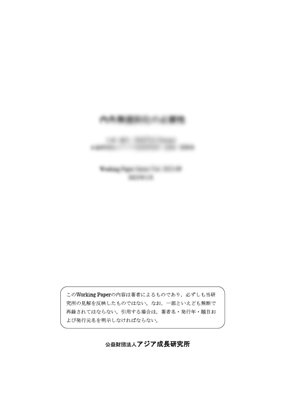Banking and Currency Crises: How Common Are Twins?

| 執筆者 | Reuven Glick, Michael Hutchison |
|---|---|
| 発行年月 | 1999年 10月 |
| No. | 1999-22 |
| ダウンロード | 413KB |
内容紹介
The coincidence of banking and currency crises associated with the Asian financial crisis has drawn renewed attention to causal and common factors linking the two phenomena. In this paper, we analyze the incidence and underlying causes of banking and currency crises in 90 industrial and developing countries over the 1975-97 period. We measure the individual and joint (“twin”) occurrence of bank and currency crises and assess the extent to which each type of crisis provides information about the likelihood of the other. We find that the twin crisis phenomenon is most common in financially liberalized emerging markets. The strong contemporaneous correlation between currency and bank crises in emerging markets is robust, even after controlling for a host of macroeconomic and financial structure variables and possible simultaneity bias. We also find that the occurrence of banking crises provides a good leading indicator of currency crises in emerging markets. The converse does not hold, however, as currency crises are not a useful leading indicator of the onset of future banking crises. We conjecture that the openness of emerging markets to international capital flows, combined with a liberalized financial structure, make them particularly vulnerable to twin crises. The predictive power of the model is illustrated for Indonesia, Korea, Malaysia and Thailand.
